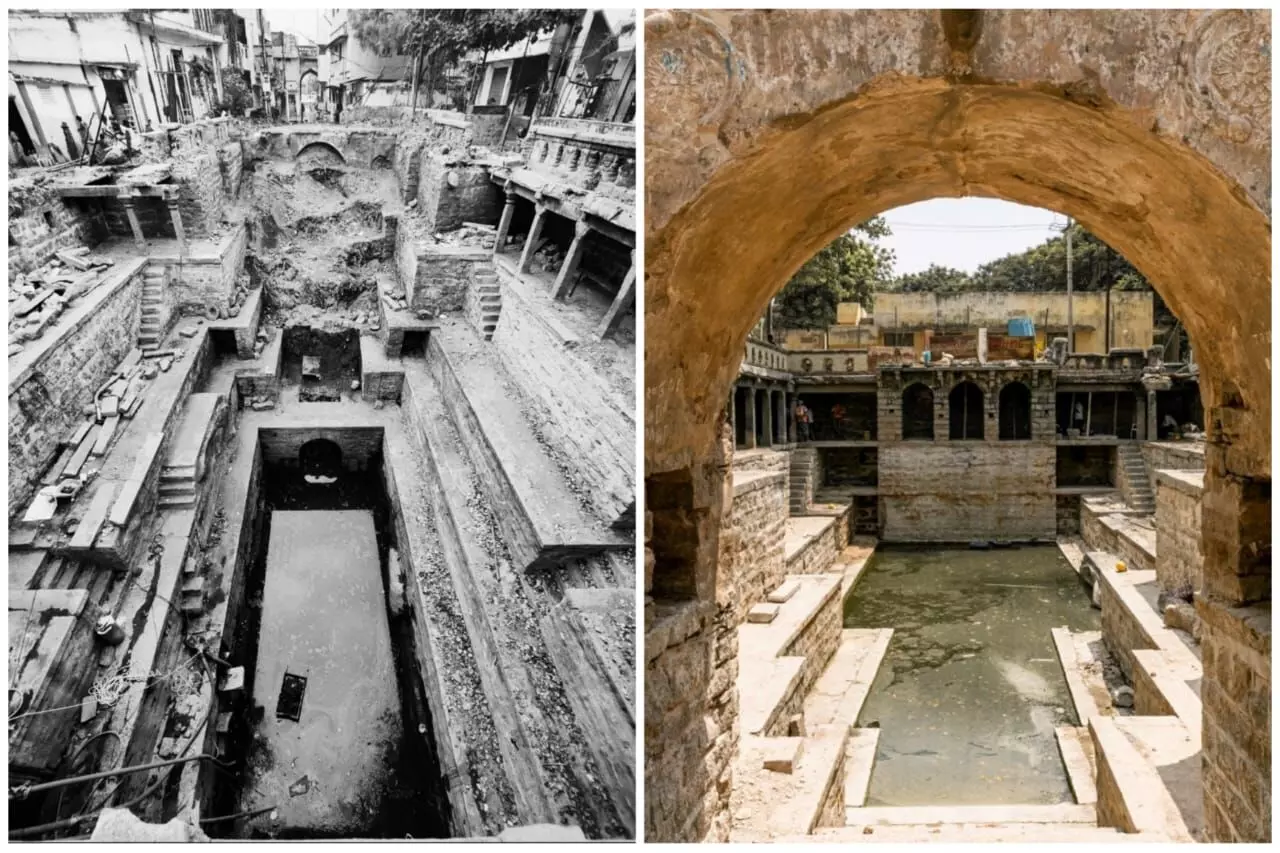Cafe, gallery, amphitheater: Once a designated dump yard, Bansilalpet Stepwell is now a sight to behold
The revival and restoration of 17th Century Bansilalpet Stepwell began a year ago. Now, the restoration nears completion and it will be called the tourist plaza.
By Amrutha Kosuru
Tucked away in the busy street of Secunderabad lies a six-layer step well with a capacity to store nearly 22 lakh liters of water. The 17th Century Stepwell has footprints of the Kakatiya dynasty and traces of the Nizam and British empires. It is also said to be an exact replica of the well in Warangal's thousand-pillar temple.
The revival and restoration of 17th Century Bansilalpet Stepwell began a year ago. Now, the restoration nears completion and it will be called the tourist plaza.
The surroundings of the parks are dotted with vibrant electric lights. In addition to the heritage structure, a modern building overlooking the well has been erected on the inside. This modern structure will possibly include a quaint cafe, gallery, and more. On the other side of this building are a small garden and an amphitheater.
The narrow lane leading to Bansilalpet stepwell has been re-laid with an underground sewage system and electric lines. A parking space has also been identified for it is just a few lanes away.
Before entering the lane, there are a few quaint shops selling snacks. Andalu, 81, who owns one of the shops, said she is happy to see the well restored. "This is how it used to be when I was young. But for the last 40-50 years, it was a dumping yard and the smell was unbearable," she said.
Andalu hoped that the restored well will fetch in more customers.
"We wanted to ensure that there are all amenities and that the stepwell is clean and near," said Secunderabad Zonal Commissioner Srinivas Reddy.
Srinivas Reddy stated that the integral point of the restoration was to involve the community in the project.
"We didn't want any problems with the residents. We helped then understand the necessity of water and the need to protect heritage structures," he added.
Kalpana Ramesh of `The Rainwater Project' said each side of the new parapet wall constructed around the Bansilalpet stepwell has a story. "We did not want to take any chances with the residents. We didn't want legal hassles for the project," she said. The Rainwater Project helped conceptualise the precinct development working with Urban planners and Architects.
Kalpana recalls how a few residents were initially resistant in certain ways about the restoration. "Residents had asked us to give us parking instead of the well. After a lot of talks, they finally understand the importance of the stepwell," she said.
The Rainwater Project has revived several stepwells in the city and state. This is the largest well that they have restored in the city to date. Kalpana Ramesh has signed MoU with the state for the revival and restoration.
The stepwell was filled with nearly 2000 tonnes of debris."This is 1/3rd the total amount of garbage produced by Hyderabad city on a daily basis," said Kalpana.
"It took multiple GHMC workers nearly 6 months to carefully remove the trash without causing any additional damage to the stepwell," Srinivas Reddy said. Staff employed by the Rainwater Project were also working on removing
In addition to recharging groundwater sources and borewells, Kalpana says that the stepwell will mitigate flooding during monsoon. "Earlier the trash-filled stepwell used to only make the floods in the low-lying areas much worse," Kalpana said.
After removing the debris, most of the stepwell structure was intact but a few walls and steps were damaged. The damaged parts have been repaired with the same composition of lime used to build the stepwell.
Kalpana explained that the job of revival and restoration doesn't end there. "The space needs to be maintained in the same sustainable way using the PPP (public-private partnership) model," she said.
Photo Credits: The Rainwater Project